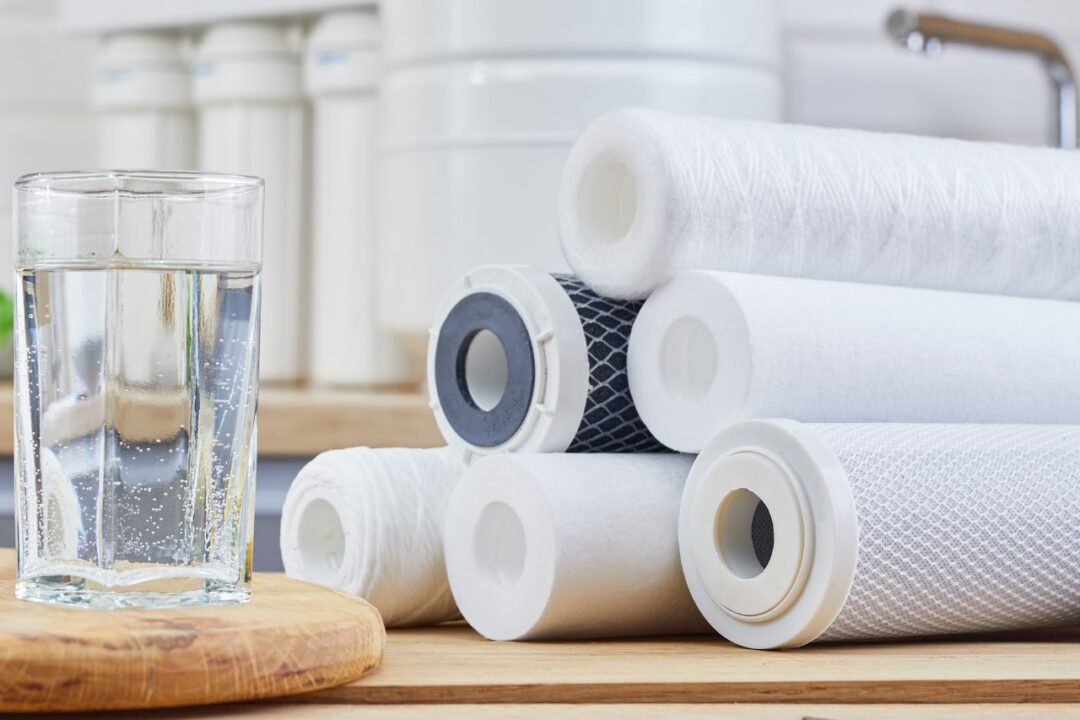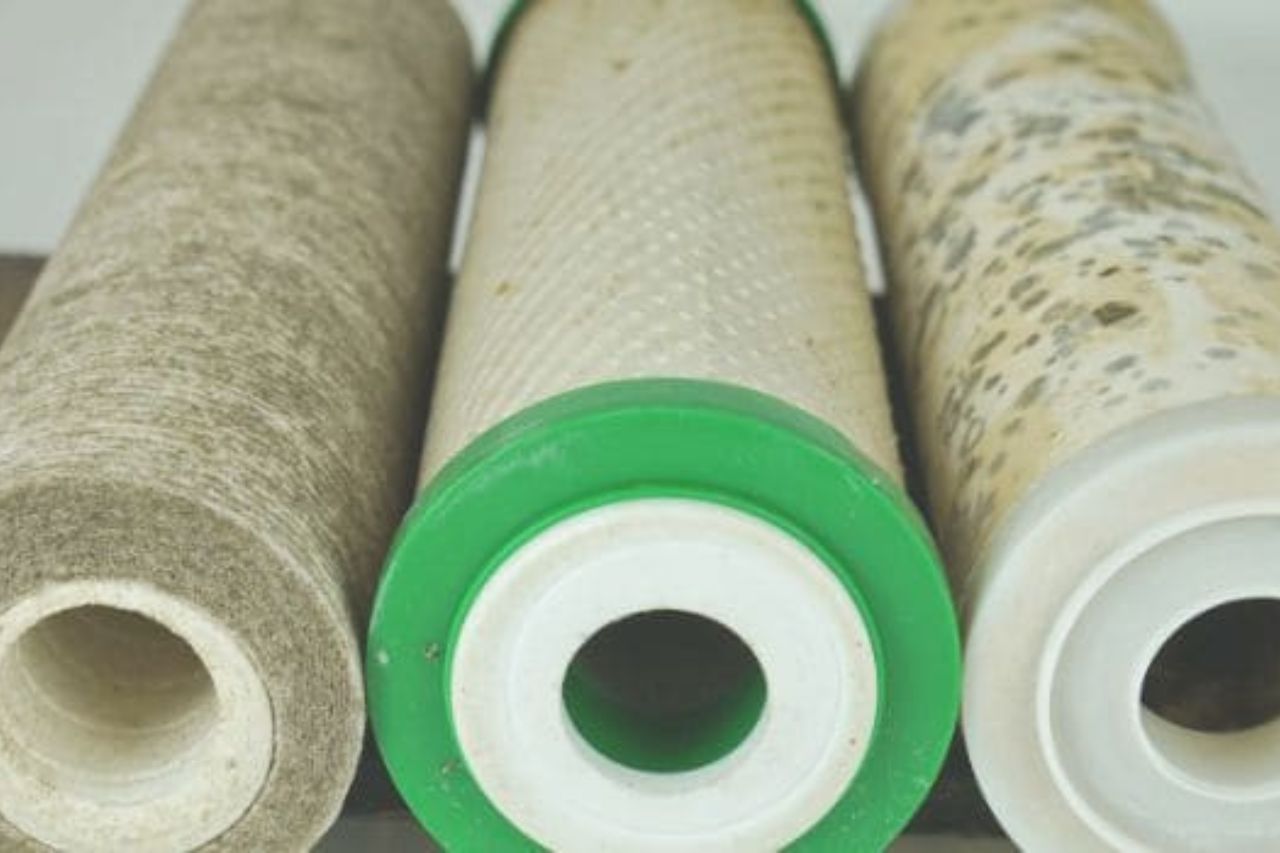Why Is My Whole House Water Filter Green?
If you’ve noticed a green tint to your water or in your whole house water filter, you may be understandably concerned.
But what could be causing this unusual discoloration? Surprisingly, the culprit may not be what you think.
So, if you’re dealing with green water, keep reading to learn more about what might be causing it and what you can do to fix it.
Key Takeaways:
- Green tint in your water or whole house water filter is often caused by a reaction between copper pipes and chlorine, leading to the formation of copper sulfate.
- Algae or other organic matter can also cause green water in your filter if it is not properly maintained, resulting in discoloration and a foul odor.
- Green water may indicate larger issues such as corroding pipes or a poorly maintained filter, which need to be addressed for your health and safety.
- Preventing green water involves regularly flushing your pipes, cleaning your filter, and replacing it when necessary.
- Common mistakes to avoid include letting water sit stagnant, using the wrong type of filter, and not cleaning the filter regularly. If DIY solutions fail, professional assistance may be required for proper diagnosis and solutions, such as installing a new filter, upgrading plumbing, or adding a water softener.
Understanding the problem: Why is my whole house water filter turning green?
Green water in your whole house water filter is a common problem that can be caused by a variety of factors.
One of the main causes of green water is the presence of copper sulfate in your water. Copper sulfate is a compound that can form when copper pipes in your home react with the chlorine in your water.
This reaction can occur when the water sits stagnant in your pipes for too long, allowing the chlorine to break down the protective layer of copper oxide that normally forms on the inside of the pipes.
Another possible cause of green water in your whole house water filter is the presence of algae or other organic matter.
Algae can grow in your water filter if it is not properly maintained, leading to discoloration and a foul odor.
Similarly, other organic matter can accumulate in your filter over time, leading to a buildup of bacteria and fungi that can produce a green tint.
Regardless of the cause, green water in your whole house water filter is a problem that needs to be addressed. Not only is it unsightly, but it can also be potentially harmful to your health.

The science behind green water in filters
The science behind green water in your whole house water filter is actually quite simple.
As mentioned earlier, the green tint is often the result of a reaction between the copper pipes in your home and the chlorine in your water.
When this reaction occurs, it can lead to the formation of copper sulfate, a greenish-blue compound that can make your water appear green.
The presence of organic matter in your filter can also contribute to the green tint.
Algae, bacteria, and fungi can all produce pigments that can discolor your water and lead to the formation of greenish hues.
The dangers of green water in your whole house water filter
While green water in your whole house water filter may not necessarily be harmful to your health, it can be a sign of larger problems that need to be addressed.
For example, the presence of copper sulfate in your water can be an indication that your pipes are corroding and need to be replaced.
Similarly, the presence of organic matter in your filter can be a sign that your filter is not properly maintained and needs to be cleaned or replaced.
Additionally, green water can be unsightly and may make you reluctant to use your tap water.
This can lead to a variety of problems, including dehydration, poor hygiene, and increased use of bottled water.
How to prevent green water in your filter
Preventing green water in your whole house water filter is relatively simple. The key is to keep your pipes and filters clean and well-maintained. Here are a few tips to help you prevent green water in your filter:
1. Flush your pipes regularly
Flushing your pipes regularly can help to prevent the buildup of copper sulfate and other minerals that can cause discoloration. Simply run your taps for a few minutes each day to help keep your pipes clean and clear.
2. Clean your filter regularly
Cleaning your whole house water filter on a regular basis can help to prevent the buildup of organic matter and bacteria that can cause discoloration. Be sure to follow the manufacturer’s instructions for cleaning your filter, and consider using a filter cleaner to help remove stubborn buildup.
3. Replace your filter when necessary
If your filter is old or damaged, it may be time to replace it. A damaged filter can allow organic matter and bacteria to accumulate, leading to discoloration and foul odors.
Common mistakes that lead to green water in filters
While preventing green water in your whole house water filter is relatively simple, there are a few common mistakes that can contribute to the problem. Here are a few things to avoid:
1. Letting your water sit stagnant
If your water sits stagnant in your pipes for too long, it can break down the protective layer of copper oxide that normally forms on the inside of the pipes. This can lead to the formation of copper sulfate, which can cause discoloration and other problems.
2. Using the wrong type of filter
Using the wrong type of whole house water filter can also contribute to the formation of green water. Be sure to choose a filter that is designed to address the specific issues in your water, such as high levels of copper or organic matter.
3. Not cleaning your filter regularly
Finally, failing to clean your whole house water filter on a regular basis can allow organic matter and bacteria to accumulate, leading to discoloration and foul odors.
DIY solutions for green water in your whole house water filter
If you’re dealing with green water in your whole house water filter, there are a few DIY solutions you can try to address the problem:
1. Flush your pipes
As mentioned earlier, flushing your pipes regularly can help to prevent the buildup of copper sulfate and other minerals that can cause discoloration. Simply run your taps for a few minutes each day to help keep your pipes clean and clear.
2. Clean your filter
Cleaning your whole house water filter on a regular basis can help to remove any organic matter or bacteria that may be contributing to the green tint. Be sure to follow the manufacturer’s instructions for cleaning your filter, and consider using a filter cleaner to help remove stubborn buildup.
3. Replace your filter
If your filter is old or damaged, it may be time to replace it. A damaged filter can allow organic matter and bacteria to accumulate, leading to discoloration and foul odors.

When to replace your whole house water filter
Knowing when to replace your whole house water filter is important for ensuring that your water is safe and healthy. Here are a few signs that it may be time to replace your filter:
1. Your water is discolored or has a foul odor
If your water is discolored or has a foul odor, it may be a sign that your filter is no longer working properly and needs to be replaced.
2. Your filter is old or damaged
If your filter is old or damaged, it may be time to replace it. A damaged filter can allow organic matter and bacteria to accumulate, leading to discoloration and foul odors.
3. Your water pressure has decreased
If your water pressure has decreased, it may be a sign that your filter is clogged and needs to be replaced.
Professional solutions for green water in your filter
If you’re dealing with persistent green water in your whole house water filter and DIY solutions aren’t working, it may be time to call in the professionals.
A water treatment specialist can help to diagnose the problem and recommend a solution that will work for your specific needs. Some possible professional solutions include:
1. Installing a new filter
If your filter is old or damaged, a water treatment specialist can help you choose a new filter that is designed to address the specific issues in your water.
2. Upgrading your plumbing
If your pipes are corroded and contributing to the formation of copper sulfate, a water treatment specialist may recommend upgrading your plumbing to prevent further damage.
3. Adding a water softener
If hard water is contributing to the formation of copper sulfate, a water treatment specialist may recommend adding a water softener to your home’s plumbing system.
Conclusion
In conclusion, green water in your whole house water filter is a common problem that can be caused by a variety of factors.
Fortunately, there are steps you can take to address this issue and ensure that your water is safe and healthy for you and your family.
By keeping your pipes and filters clean, choosing the right type of filter, and knowing when to replace your filter, you can prevent green water and other water-related problems from occurring.
And if DIY solutions aren’t working, don’t hesitate to call in the professionals for help.







